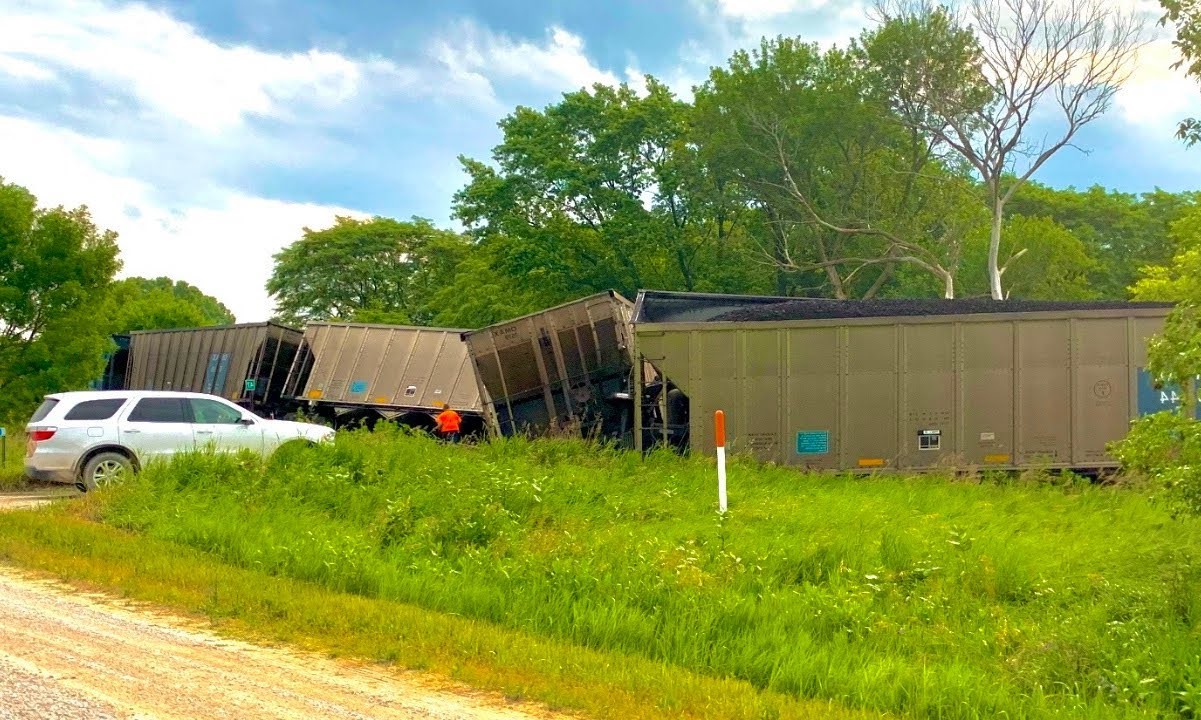
What happened during the Bennet, Nebraska train derailment? This incident shook the small town of Bennet, Nebraska, leaving residents and authorities scrambling for answers. On a quiet morning, a freight train carrying hazardous materials derailed, causing a significant spill and raising environmental concerns. The derailment led to the evacuation of nearby homes and businesses as emergency responders worked tirelessly to contain the situation. Local wildlife and water sources faced potential contamination, prompting swift action from environmental agencies. The community came together, offering support and shelter to those affected. Investigations into the cause of the derailment are ongoing, with officials examining track conditions, train speed, and mechanical failures. This event serves as a stark reminder of the potential dangers associated with transporting hazardous materials by rail.
Key Takeaways:
- The Bennet, Nebraska train derailment on March 10, 2023, caused environmental and economic repercussions, leading to enhanced safety measures and a resilient community response.
- The derailment, caused by track defects and human error, led to hazardous material spills, economic losses, and community support efforts, highlighting the importance of safety and resilience.
Bennet, Nebraska Train Derailment: An Overview
The Bennet, Nebraska train derailment is a significant event that has captured public attention. This incident has many layers, from the causes to the aftermath. Here are some intriguing facts about this derailment.
-
The derailment occurred on March 10, 2023. This date is now etched in the memories of Bennet residents.
-
Bennet is a small town in Lancaster County, Nebraska. It has a population of just over 800 people.
-
The train involved was operated by Union Pacific, one of the largest railroad companies in the United States.
-
Twenty-two cars derailed in the incident. This caused significant disruption and damage.
-
The train was carrying hazardous materials, including chemicals used in agriculture and manufacturing.
Causes of the Derailment
Understanding what led to the derailment is crucial for preventing future incidents. Here are some key points about the causes.
-
Track defects were identified as a primary cause. Regular maintenance is essential to prevent such issues.
-
Human error also played a role. Proper training and adherence to safety protocols are vital.
-
Weather conditions on the day were less than ideal. Heavy rain had weakened the track bed.
-
The train was traveling at 45 miles per hour, which is within the speed limit but may have contributed to the derailment.
-
Mechanical failure in one of the cars was another factor. Regular inspections could help catch such issues early.
Immediate Aftermath
The immediate response to the derailment was crucial in mitigating damage and ensuring safety. Here are some facts about what happened right after the incident.
-
Emergency services were on the scene within 30 minutes. Quick response times are essential in such situations.
-
Evacuations were ordered for residents within a one-mile radius. Safety of the community was the top priority.
-
Firefighters worked tirelessly to contain any fires and prevent further damage.
-
Hazmat teams were deployed to manage the hazardous materials. Their expertise was crucial in preventing a larger disaster.
-
Road closures were implemented to keep the area secure. This helped in managing the situation more effectively.
Environmental Impact
The derailment had significant environmental consequences. Here are some facts about the impact on the environment.
-
Chemical spills contaminated local water sources. This posed a risk to both human health and wildlife.
-
Soil contamination was another major issue. Cleanup efforts are ongoing to restore the area.
-
Air quality was temporarily affected due to the release of hazardous materials. Monitoring continues to ensure safety.
-
Wildlife in the area was impacted. Efforts are being made to rehabilitate affected animals.
-
Long-term monitoring is in place to assess the full extent of environmental damage.
Economic Impact
The derailment also had economic repercussions for Bennet and the surrounding areas. Here are some key points.
-
Local businesses suffered due to road closures and evacuations. Some had to shut down temporarily.
-
Agricultural activities were disrupted. Farmers faced delays in planting and harvesting.
-
Cleanup costs are estimated to be in the millions. This is a significant financial burden for the community.
-
Insurance claims have skyrocketed. Many residents and businesses are seeking compensation for their losses.
-
Job losses were reported in some sectors. The economic recovery will take time.
Safety Measures Implemented
In response to the derailment, several safety measures have been put in place to prevent future incidents. Here are some of them.
-
Track inspections have been increased. Regular checks are now mandatory.
-
Speed limits for trains passing through Bennet have been reduced. This aims to minimize the risk of derailment.
-
Training programs for railroad employees have been enhanced. Safety protocols are being emphasized.
-
Community awareness programs have been launched. Residents are being educated on how to respond in case of future incidents.
-
Emergency response plans have been updated. Coordination between different agencies has improved.
Community Response
The community of Bennet has shown remarkable resilience in the face of this disaster. Here are some facts about their response.
-
Volunteers have played a crucial role in the cleanup efforts. Their dedication is commendable.
-
Fundraisers have been organized to support affected families. The community has come together to help those in need.
-
Support groups have been formed to provide emotional and psychological assistance. Coping with such a disaster is challenging.
-
Local government has been proactive in addressing the needs of the community. Their efforts are ongoing.
-
Rebuilding efforts are in full swing. The community is determined to recover and move forward.
Final Thoughts on Bennet Nebraska Train Derailment
The Bennet Nebraska train derailment serves as a stark reminder of the importance of railway safety and emergency preparedness. This incident, while unfortunate, highlighted the resilience of the local community and the effectiveness of first responders. Understanding the causes and consequences of such events can help prevent future occurrences and improve response strategies.
For those interested in railway safety, this derailment offers valuable lessons. From the technical aspects of train operations to the human element in emergency response, every detail matters. The community's quick action and the coordinated efforts of various agencies ensured that the situation was managed effectively.
By learning from these events, we can work towards a safer and more efficient railway system. Stay informed, stay prepared, and always prioritize safety.
Frequently Asked Questions
Was this page helpful?
Our commitment to delivering trustworthy and engaging content is at the heart of what we do. Each fact on our site is contributed by real users like you, bringing a wealth of diverse insights and information. To ensure the highest standards of accuracy and reliability, our dedicated editors meticulously review each submission. This process guarantees that the facts we share are not only fascinating but also credible. Trust in our commitment to quality and authenticity as you explore and learn with us.


